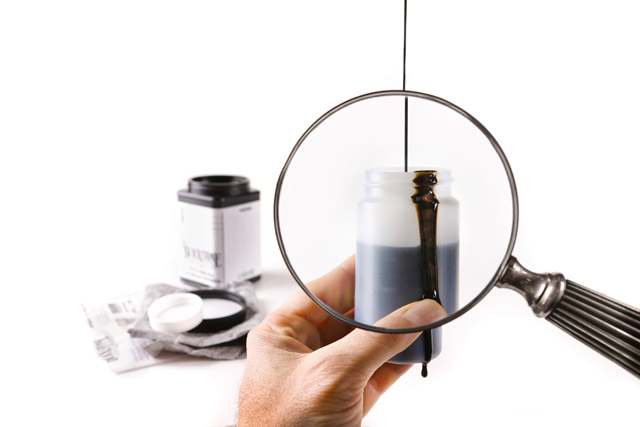P&E Airframe & Powerplant
Going to the analyst
Using oil analysis to predict engine health

By Thomas B. Haines
Waiting for an oil-analysis report is a bit like waiting for test results from your doctor. What will it show, how life changing might the results be, and how much might the problem cost? When it comes to our aircraft engines, the “how much” part can quickly become a five-figure problem—making health care seem cheap.
Just as we work hard on preventative maintenance in caring for our bodies (how’s that New Year’s gym membership going for you?), we should be so proactive in the care of our engines. One tool (and just one of several you should use) is oil analysis.
The process is simple: Get an oil sample kit from one of numerous providers. Grab a sample midstream when draining the oil during an oil change. Record the number of hours on the oil and the engine, the type of cylinders, and the number of quarts of oil added between changes, and send it to the lab that provided the kit. A few anxious days later, receive a report, typically Emailed these days, that shows an analysis of the types of metals and other particulates picked up by the oil—and small enough to make it through the oil filter or oil screen.
In addition to particulates, most reports include details on the viscosity of the fuel, flash point, and other properties that can be helpful in noticing trends or problems. While reports from some companies only compare to previous reports, Blackstone Laboratories is one that compares the current report to previous reports and also to a set of standards it has developed over the decades. Its database contains many thousands of reports of normal levels of the amount of iron, for example, that a sample might contain given the number of hours on the oil and the engine.
The Blackstone reports come with a chatty, personalized message at the top written in plain English. For example, a recent report on my Continental IO-550 came back with this message at the top: TOM: The viscosity of your oil was in the normal range this time, so we are happy to be giving your IO-550 perfect reports again. This was after a previous report where the viscosity was out of whack for some reason. The comments went on to relay a few more observations, including a reference to a trend from three years earlier—someone is clearly paying attention to what is happening over time with my expensive engine.
Oil analysis is only helpful if it is done regularly—ideally at every oil change, so trends can be spotted. A hit-and-miss approach isn’t useful. What the reports can do is help you understand what parts of the engine are wearing, based on the types of metal found in the oil. High levels of copper, for example, might result from the installation of a new oil cooler. If no new oil cooler, then it might be as a result of the wearing of bronze valve guides in some types of engines.
None of that would show up in an oil filter or screen—the particulates are too small. Partner oil analysis with regular examination of the oil filter for larger chunks of metal and you can more easily discern problem areas, such as valve train wear and especially camshaft wear.
Expect to pay between about $15 and $20 per analysis, depending on the company and whether you choose to prepay for the analysis kits or not. With 50-hour oil changes, over the 2,000-hour TBO life of an engine, you’ll spend less than $1,000 on oil analysis, which buys a lot of peace of mind—and probably gives you a lot of comfort in flying beyond TBO if the numbers all look good.
The range of tools available to an aircraft owner for monitoring engine health includes oil analysis for trend information, visual and magnetic oil filter examinations, oil consumption trends, cylinder compression trends, digital trend analysis from an onboard engine analyzer, and regular borescope investigations—ideally using a modern, digital borescope. Use them all, and the likelihood of an engine surprise right after takeoff is greatly reduced.
Email [email protected]
A sampling of popular oil analysis companies:
ALS (sold through Aircraft Spruce and other catalogs)
Aviation Laboratories Metal Check (sold through Chief Aircraft and other catalogs)
Aeroshell, ExxonMobil, Phillips 66, and others also offer oil analysis services, typically private labeled by one of the above or other companies.


